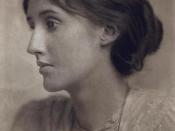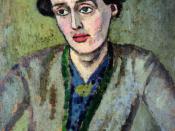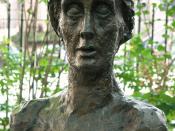Virginia Woolf and Her Struggle with Bipolar Disorder
Mental disorders are surprisingly common among people, even in history. About one in four adults suffer from a mental disorder (Kim Foundation, 2006. Para. 1). When people think of someone having a mental disorder, they imagine a freak or a homeless person. But few would imagine that Virginia Woolf, a famous English writer, would suffer from a horrifying case of bipolar disorder.
Virginia Woolf was born on January 25, 1882. She was a much appreciated English writer who, sadly, suffered from mood swings which is typical for those who have bipolar disorder. When she was six years old, her brothers George and Gerald, sexually abused her. Later, her mother, Julia Prinsep Stephen, died at age 49, leaving Woolf at an age of fifteen, which caused her first depressive episode. Since then, Woolf experienced severe mood swings. Virginia's episodes would begin with migraine headaches and sleeplessness which led her to hearing voices and having visual hallucinations.
(National Alliance of Mental Illness, para. 5).
Sadly, Woolf's bipolar disorder continued to have a huge impact on her life as well as in her writing creativity. Once Virginia Woolf finished her first novel, The Voyage Out, she was not able to see it published until two years later, after another severe breakdown. Her mood swings also stopped her from finishing another novel called Between the Acts. The mood swings and breakdowns would come and go, eventually driving Woolf to suicide.
Woolf tried to receive treatment to cure her illness, but the only thing doctors where knowledgeable of was the "rest cure". The "rest cure" was developed by Silas Weir Mitchell in the late 1800's. This treatment became widely used in US and UK, but was prescribed mostly for woman ("Rest cure", para. 1).


